St. Petersburg is a city known as the cultural capital of Russia and captivates visitors with its history. Founded in 1703 by Tsar Peter the Great, this magnificent city lies on the banks of the Neva River and, due to its strategic location at the crossroads of Europe and Asia, bears traces of many different cultures. The city stands out with its baroque and neoclassical architectural styles and attracts millions of tourists every year with its world-famous museums, palaces, churches, and historical buildings. St. Petersburg is distinguished by its cultural heritage, elegant structures, and dedication to the arts, making it a unique destination worldwide.
Visitors to St. Petersburg can feel the traces of the past in every corner. Among the most important landmarks of the city are the Hermitage Museum, the Peter and Paul Fortress, and the Kazan Cathedral. In addition, enchanting parks, elegant palaces, and art galleries offer many different options for those wishing to explore the city. Each site reflects the historical richness and cultural diversity of St. Petersburg, promising visitors a journey through time. With its history, art, and natural beauty, the city is a paradise worth discovering for all travelers.
1. The Hermitage Museum – One of the largest art and culture museums in the world.
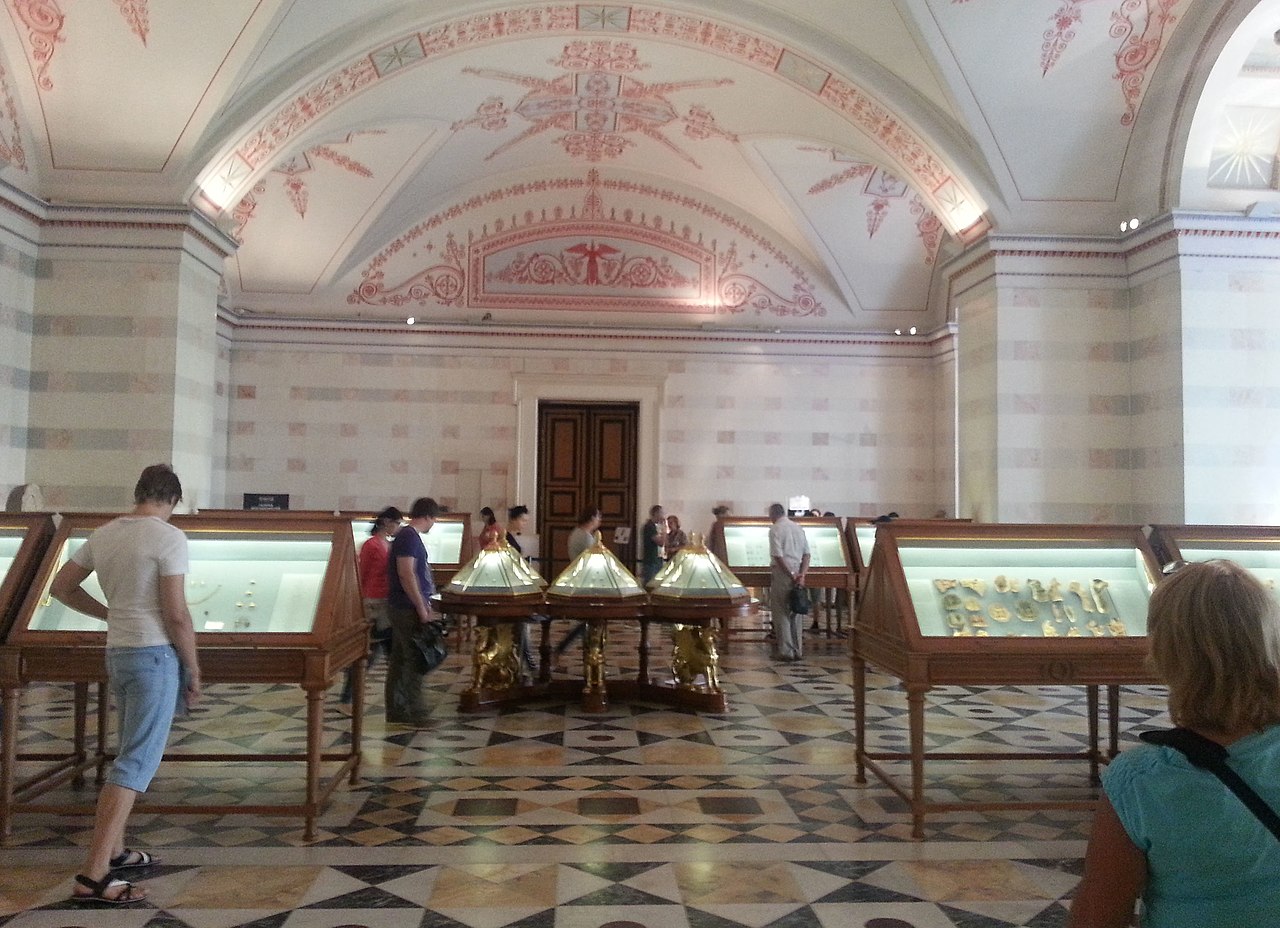
The Hermitage Museum is located in the heart of St. Petersburg and is considered one of the largest art and culture museums in the world. Founded in 1764 by Empress Catherine the Great, this museum welcomes millions of visitors every year with its rich collections. The museum displays a wide range of artworks, from Ancient Greek and Roman periods to the Middle Ages, from the Renaissance to modern art. With over 3 million works, the museum is home to masterpieces by famous artists such as Leonardo da Vinci, Rembrandt, Michelangelo, and Van Gogh.
The Hermitage Museum is captivating not only for its art collections but also for its architecture. The Winter Palace, which is part of the museum, is an immense blend of baroque and rococo styles and was once used as the administrative center of the Russian Empire. Visitors can explore the magnificent interiors of the palace, where they can discover traces of the past and art among the masterpieces, while also feeling the rich atmosphere of this historic structure. The Hermitage is an important symbol that best reflects the cultural wealth of St. Petersburg by combining art and history.
2. Nevsky Prospect – The most famous street and shopping district in the city.
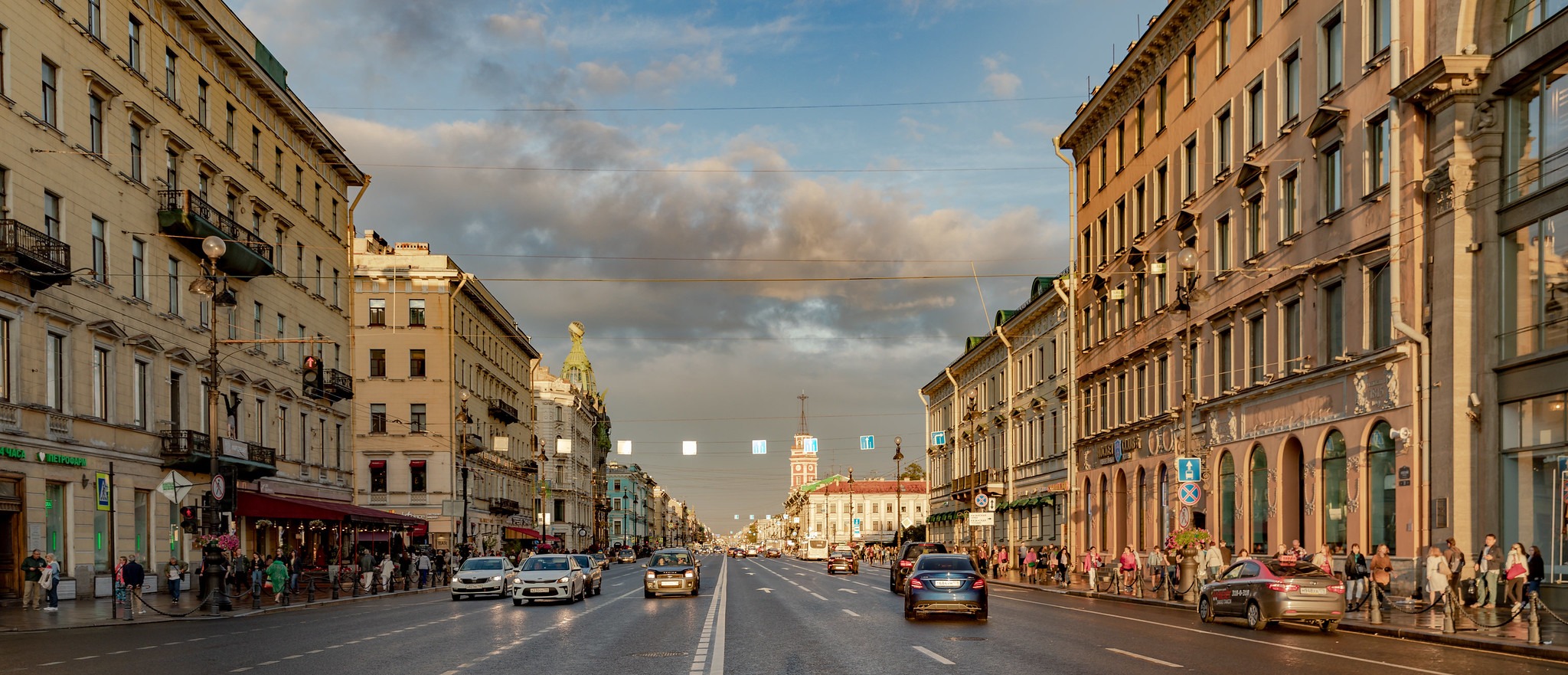
Nevsky Prospect is St. Petersburg’s most famous street and one of the main arteries where the heart of the city beats. Stretching 4.5 kilometers, this avenue cuts through the city from north to south, connecting its most important commercial, cultural, and social hubs. Nevsky Prospect is renowned for its historic buildings, magnificent palaces, elegant cafés, and luxury shopping stores. The grand structures lining both sides of the street serve as an open-air gallery for visitors. As you walk along the avenue, you can discover an atmosphere where the elegance of the Russian Empire blends seamlessly with modern life.
Nevsky Prospect is not only ideal for shopping but also for experiencing the cultural richness of the city. The famous cafés and restaurants along the street offer both traditional Russian cuisine and international dishes. Additionally, various theaters, cinemas, and museums are located along this avenue, making Nevsky Prospect a cultural meeting point. As one of the city’s most important boulevards, this street reflects the vibrant life of St. Petersburg and remains an essential destination for both tourists and locals alike.
3. Peter and Paul Fortress – A historic fortress and one of the city’s landmarks.

The Peter and Paul Fortress is one of the oldest and most important structures in St. Petersburg. Founded in 1703 by Tsar Peter the Great, this fortress symbolizes the birth of the city and is located on the northeastern bank of the Neva River. Although it was originally built for defensive purposes, the fortress gradually became the historical center of St. Petersburg. Within the fortress, the Peter and Paul Cathedral stands out as the burial site of Russian emperors. The golden dome of the cathedral is the most recognizable feature of the fortress’s silhouette and is a must-see spot for every visitor to the city.
The Peter and Paul Fortress is captivating not only for its historical significance but also for its architecture. In addition to the baroque-style cathedral, various museums, former prison buildings, and fortress walls within the complex offer visitors valuable insights into Russia’s past. It is also the oldest structure in St. Petersburg and holds many fascinating stories about the city. As visitors walk along the paths surrounding the fortress, they embark on both a historical and visual journey. As one of the symbols of St. Petersburg, the Peter and Paul Fortress continues to be a favorite destination for those exploring the city.
4. Kazan Cathedral – A Russian Orthodox church with impressive architecture.

Kazan Cathedral is one of the most important religious structures in St. Petersburg and features an impressive architecture that reflects the grandeur and elegance of the Russian Orthodox Church. Construction of the cathedral began in 1811, commissioned by Russian Emperor Alexander I, and it was dedicated to the Icon of Our Lady of Kazan. Built in the neoclassical style, the cathedral’s magnificent façade and large dome capture the attention of visitors. The massive square in front of the cathedral and the colonnaded entrance further emphasize the structure’s impressive scale and splendor.
Kazan Cathedral stands out not only for its architecture but also for its religious and cultural significance. Inside, richly decorated with icons, golden details, and colorful frescoes, the interior captivates all who enter. The presence of the revered Kazan Icon, considered sacred in the Russian Orthodox Church, enhances the cathedral’s spiritual importance. With its central location in St. Petersburg and stunning design, Kazan Cathedral serves as both a spiritual and aesthetic landmark for locals and tourists alike. It is a must-visit site for anyone wishing to explore the city’s cultural wealth and religious heritage.
5. Catherine Palace and Park – A baroque-style palace with an enchanting park.
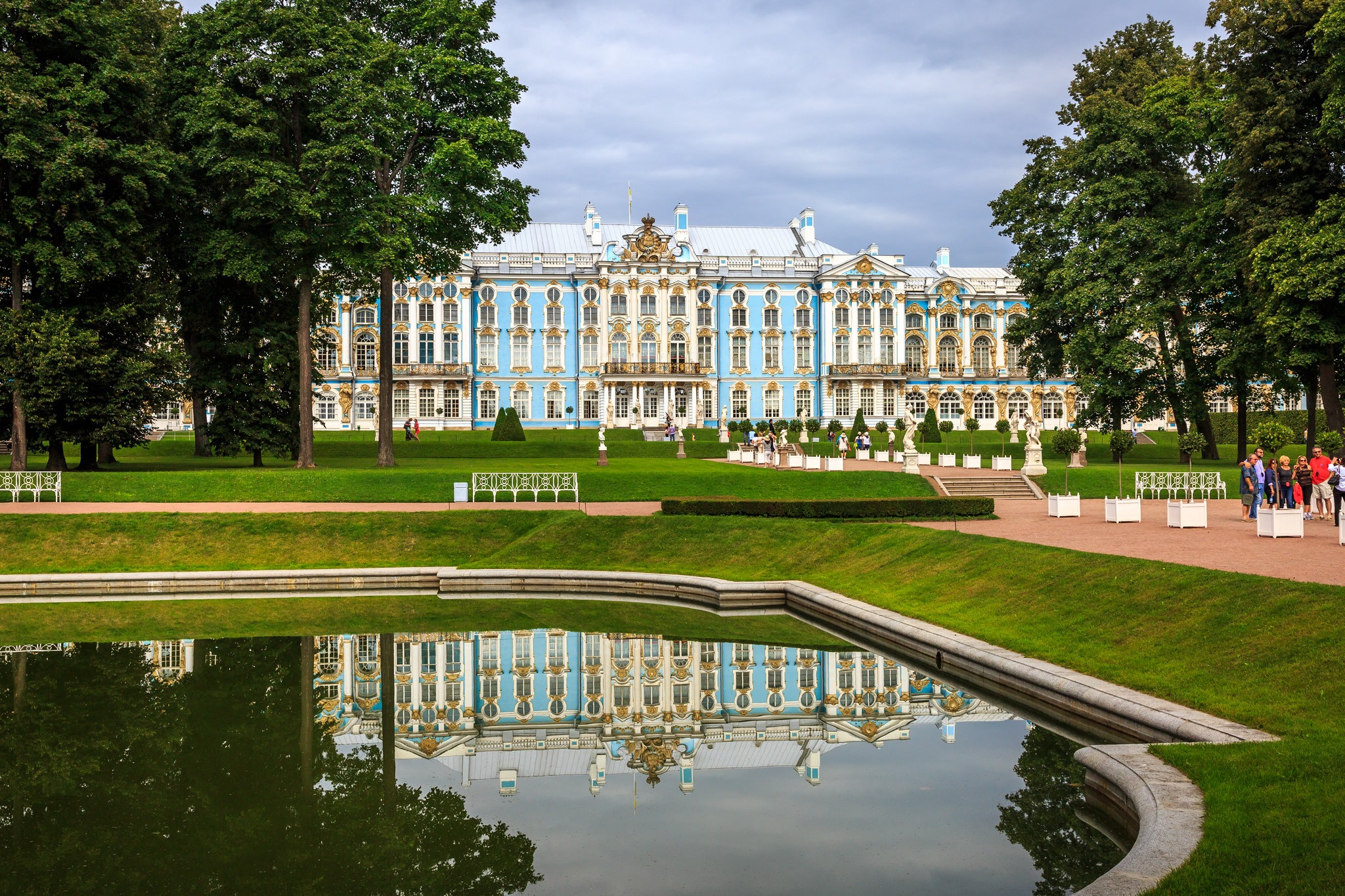
Catherine Palace and Park is a baroque-style structure located in the town of Tsarskoye Selo outside St. Petersburg, and it is one of the best representations of the grandeur of the Russian Empire. Built in the 18th century by Empress Catherine I, the palace stands out with its immense size and magnificent decoration. One of the most famous parts of the palace is the Amber Room, known for its dazzling elegance with gold and amber panels, and considered one of the most valuable interiors in the world. The palace interiors are adorned with luxurious, art-filled rooms, grand halls, and elegant furnishings.
The park surrounding Catherine Palace is another enchanting feature. With its meticulously landscaped gardens, ponds, statues, and walking paths, the park serves as a perfect complement to the grandeur of the palace. It was once a place of rest and leisure for the empresses during the summer months. Today, it offers a peaceful walking area for nature lovers and history enthusiasts. With its elegant architecture, historical significance, and natural beauty, Catherine Palace and Park stands out as one of the most popular tourist destinations around St. Petersburg.
6. Mikhailovsky Palace – A magnificent palace of the Russian Empire.
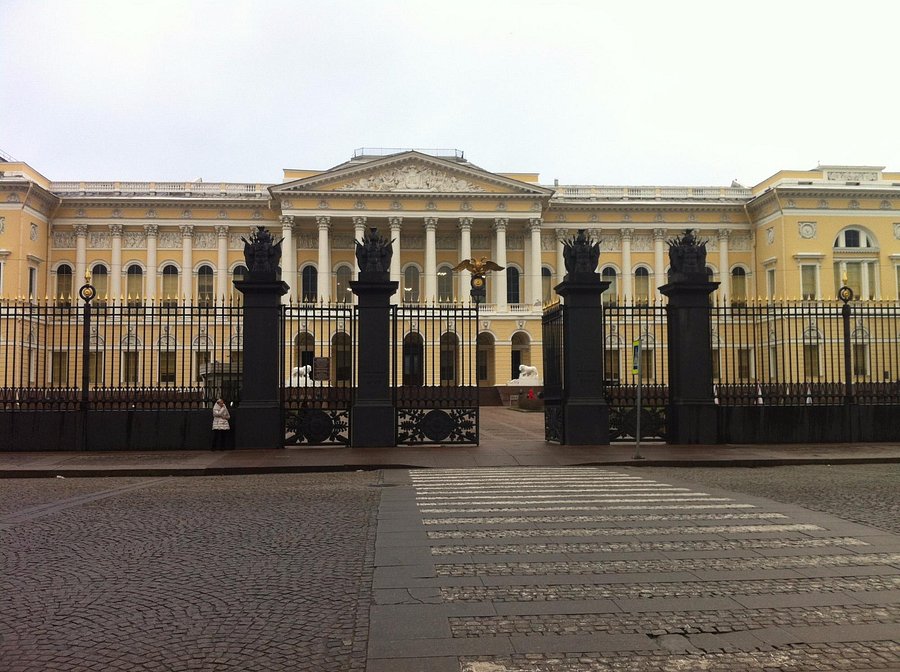
Mikhailovsky Palace is a magnificent palace of the Russian Empire located in the historical center of St. Petersburg. Built between 1819 and 1825, this palace is one of the finest examples of neoclassical architecture and was originally constructed for Grand Duke Mikhail Pavlovich, the brother of Emperor Alexander I. The palace stands out with its grand columns, large windows, and elegant exterior details. Its interior also reflects the luxury and refinement of the era, revealing the historical richness within.
Today, Mikhailovsky Palace serves as part of the Russian State Museum and the Russian Academy of Music. Inside the palace, art galleries and music halls offer visitors a chance to explore both history and art simultaneously. Mikhailovsky Palace is distinguished not only by its architecture but also by its historical significance. It symbolizes the power and grandeur of the Russian aristocracy and has long been a vital part of the city’s cultural life. For those visiting St. Petersburg, it is an essential destination rich in history and artistic value.
7. St. Isaac’s Cathedral – The largest and most impressive cathedral in the city.
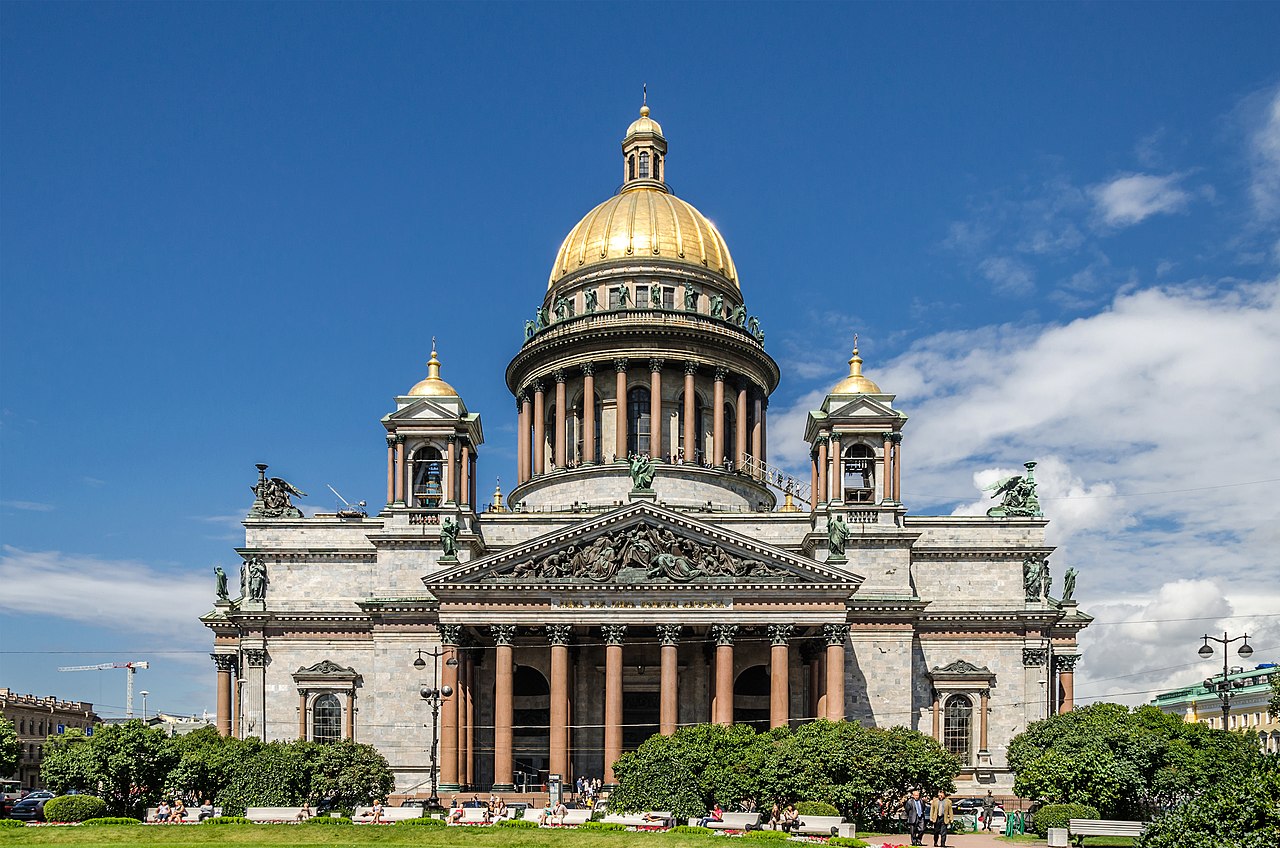
St. Isaac’s Cathedral is one of the largest and most impressive religious structures in St. Petersburg. Constructed between 1818 and 1858, this cathedral is one of the most prominent examples of the elegant architecture of the Russian Orthodox Church and the grandeur of the Russian Empire. Built in the neoclassical style, the cathedral dominates the city with its dome reaching a height of 101.5 meters and holds the distinction of being the fourth-largest cathedral in the world. Its interior is adorned with golden embellishments, colorful marble, mosaics, and large-scale icons, enhancing the cathedral’s visual impact.
The dome of St. Isaac’s Cathedral is especially striking with its gold plating, making it the most eye-catching feature of the structure. Additionally, the spacious interior, with its high ceilings and massive columns, creates an awe-inspiring atmosphere. Visitors can feel the traces of the past in this sacred space, where significant religious rituals and ceremonies of the historical Russian Empire once took place. The square surrounding the cathedral serves as an important social and religious center in the heart of St. Petersburg. As the city’s largest cathedral, it holds a significant place in St. Petersburg’s cultural heritage with its architecture and artistic details.
8. Peter the Great’s Summer Palace – A summer residence built for the Russian tsars.
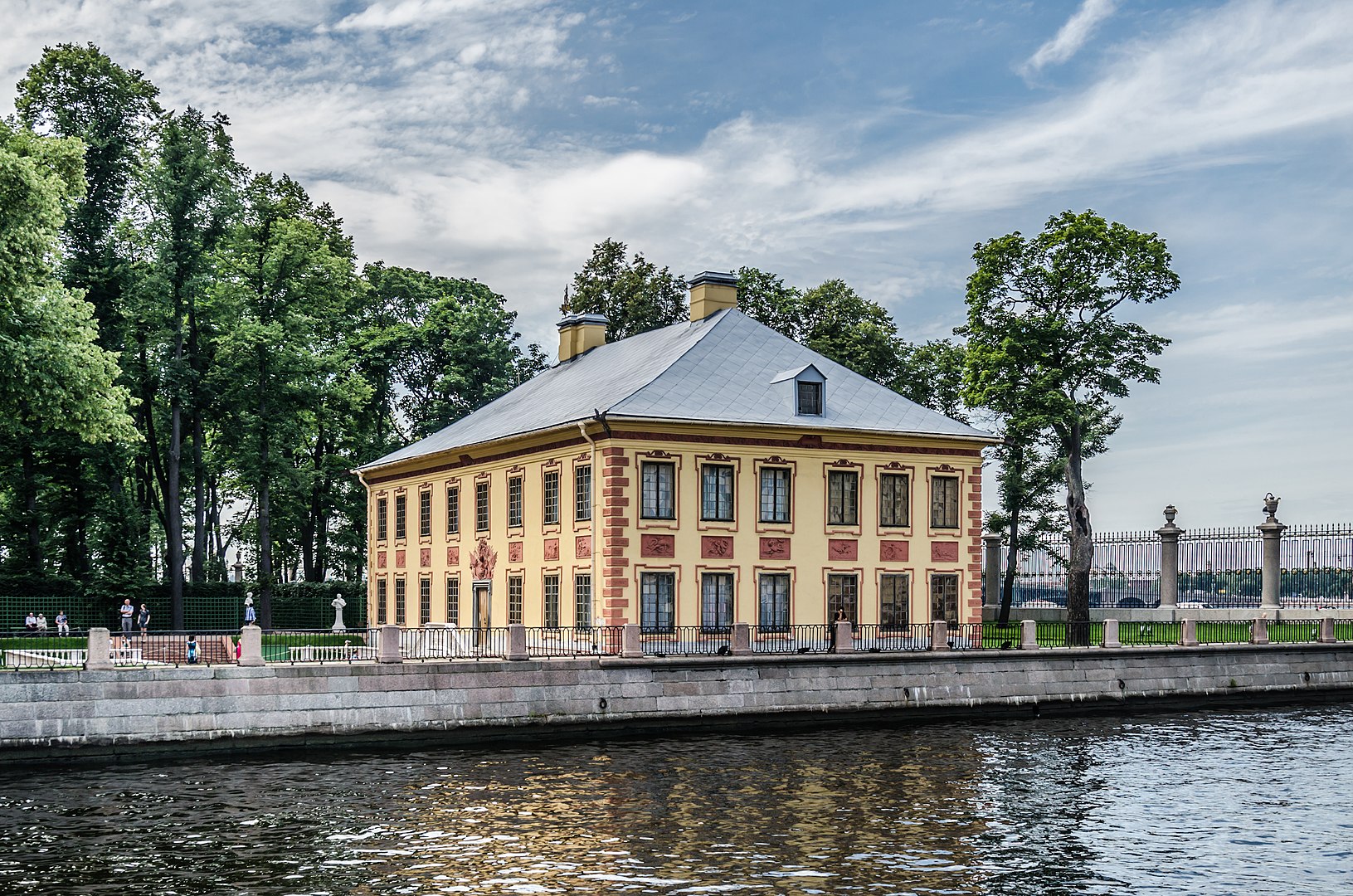
Peter the Great’s Summer Palace is an impressive residence located in the town of Peterhof outside St. Petersburg, built for the Russian tsars. Commissioned by Tsar Peter the Great in 1709 as a summer residence, the palace was inspired by the Palace of Versailles in France. Constructed in the baroque style, this elegant structure reflects the grandeur and opulence of the Russian Empire. The palace is famous for its vast parks, fountains, golden statues, and lavish gardens.
Peter the Great’s Summer Palace is notable not only for its interior but also for its expansive exterior grounds. The large park behind the palace is adorned with spectacular fountains, and the section known as the “Grand Cascade” is considered the largest fountain complex in the world. Inside the palace, grand halls, gold embellishments, and elegant furnishings display the luxurious lifestyle of the Russian imperial court. This summer residence is both historically and visually stunning, making it one of the must-see tourist attractions for visitors to St. Petersburg.
9. The Winter Palace – The historic palace that houses the Hermitage Museum.
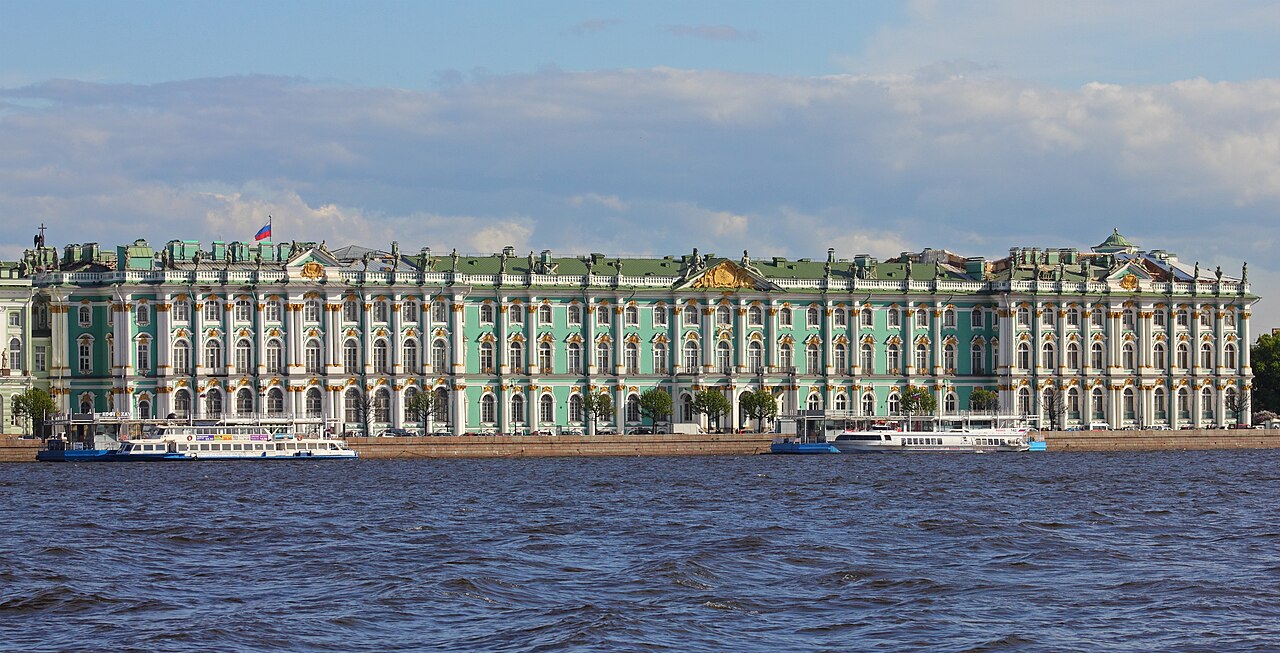
The Winter Palace is one of the iconic landmarks of St. Petersburg and also the historic building that houses the Hermitage Museum. Commissioned by Empress Elizabeth between 1754 and 1762, this magnificent structure symbolizes the grandeur and power of the Russian Empire. Built in the baroque style, the palace is known for its elegant decorations, vast halls, and opulent interiors. The Winter Palace served not only as a government residence but also as the living quarters of the imperial family.
Today, the Winter Palace is home to the Hermitage Museum, one of the largest art museums in the world. The museum features an extensive collection ranging from ancient artifacts to contemporary artworks, including masterpieces by renowned artists such as Leonardo da Vinci, Rembrandt, Van Gogh, and Michelangelo. The palace’s lavish rooms, grand halls, and rich architecture offer visitors a journey through history and art. The Winter Palace and the Hermitage Museum lie at the heart of St. Petersburg’s cultural heritage, making them a must-see destination for anyone visiting the city.
10. Pushkin Museum – One of the city’s significant cultural and historical museums.
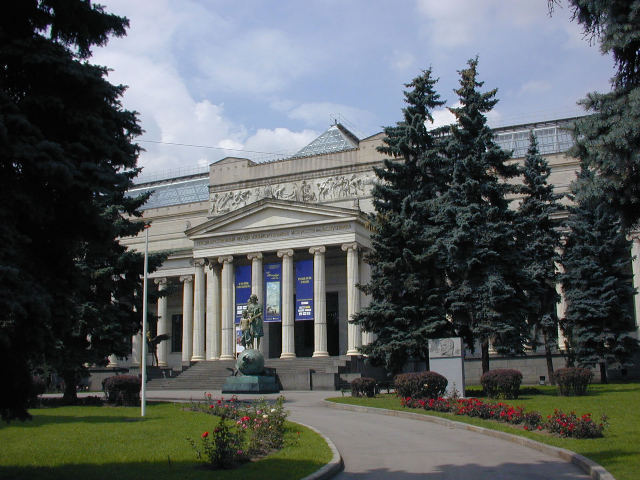
The Pushkin Museum is one of the most important cultural and historical museums in St. Petersburg. Established in 1896, this museum was opened to honor the memory of Alexander Pushkin, one of the greatest writers in Russian literature, and to preserve his literary legacy for future generations. The museum features rich collections related to Pushkin’s life and works, including personal belongings, manuscripts, and exhibitions showcasing the cultural elements of his era. Visitors can find examples of his poetry, novels, and theatrical works.
Moreover, the Pushkin Museum is not limited to literature; it also serves as an important resource for exploring different aspects of Russian culture. The museum displays valuable collections such as 19th-century Russian artworks, objects reflecting the lifestyle of the time, and portraits of individuals who interacted with Pushkin. It is a wonderful place to celebrate the poet’s legacy while also presenting the rich cultural past of Russia to its visitors. For literature lovers and history enthusiasts in St. Petersburg, this museum is a key stop for discovering the city.
11. Kremlin Garden – Beautiful gardens located in the city center.
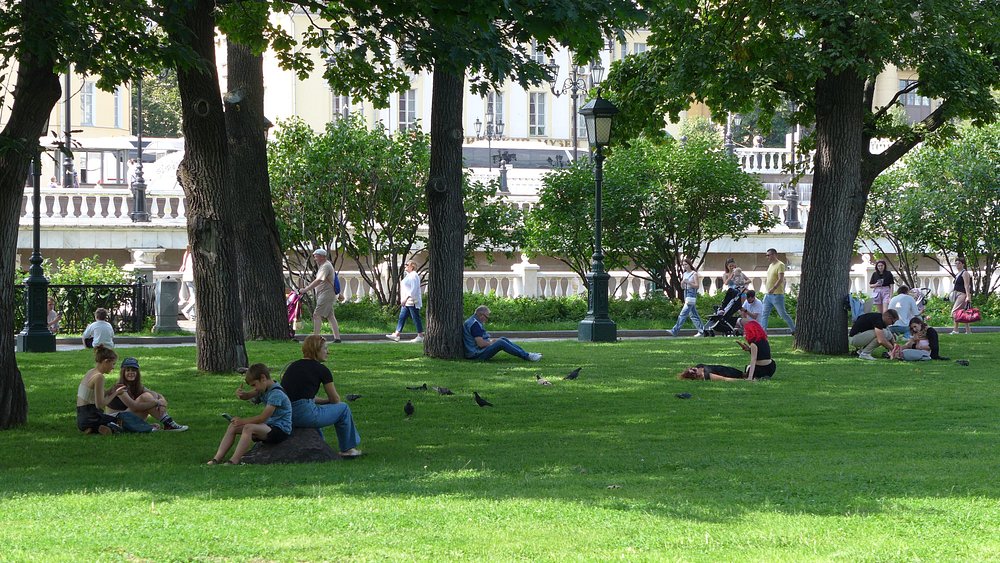
Kremlin Garden is a historic and beautiful park located in the city center of St. Petersburg. Situated along the banks of the Neva River near the Peter and Paul Fortress, this park offers visitors a chance to relax and enjoy nature. Adorned with elegant walking paths, ponds, green spaces, and various sculptures, Kremlin Garden serves as a peaceful escape for those exploring the city. Its well-maintained landscape and natural beauty create a serene environment for anyone seeking a break from the city’s busy pace.
Kremlin Garden also holds historical significance. During the Tsarist era, it was used as a place of rest and leisure by Russian emperors and the aristocracy. Over time, it became one of the city’s important cultural and social gathering spots. In addition to many historical structures and monuments within the garden, the surrounding buildings also bear traces of the city’s past. Today, it stands out as a perfect place where both locals and tourists can relax and enjoy nature while discovering St. Petersburg’s cultural richness.
12. Yelagin Island – Known for its natural beauty and historical landmarks.
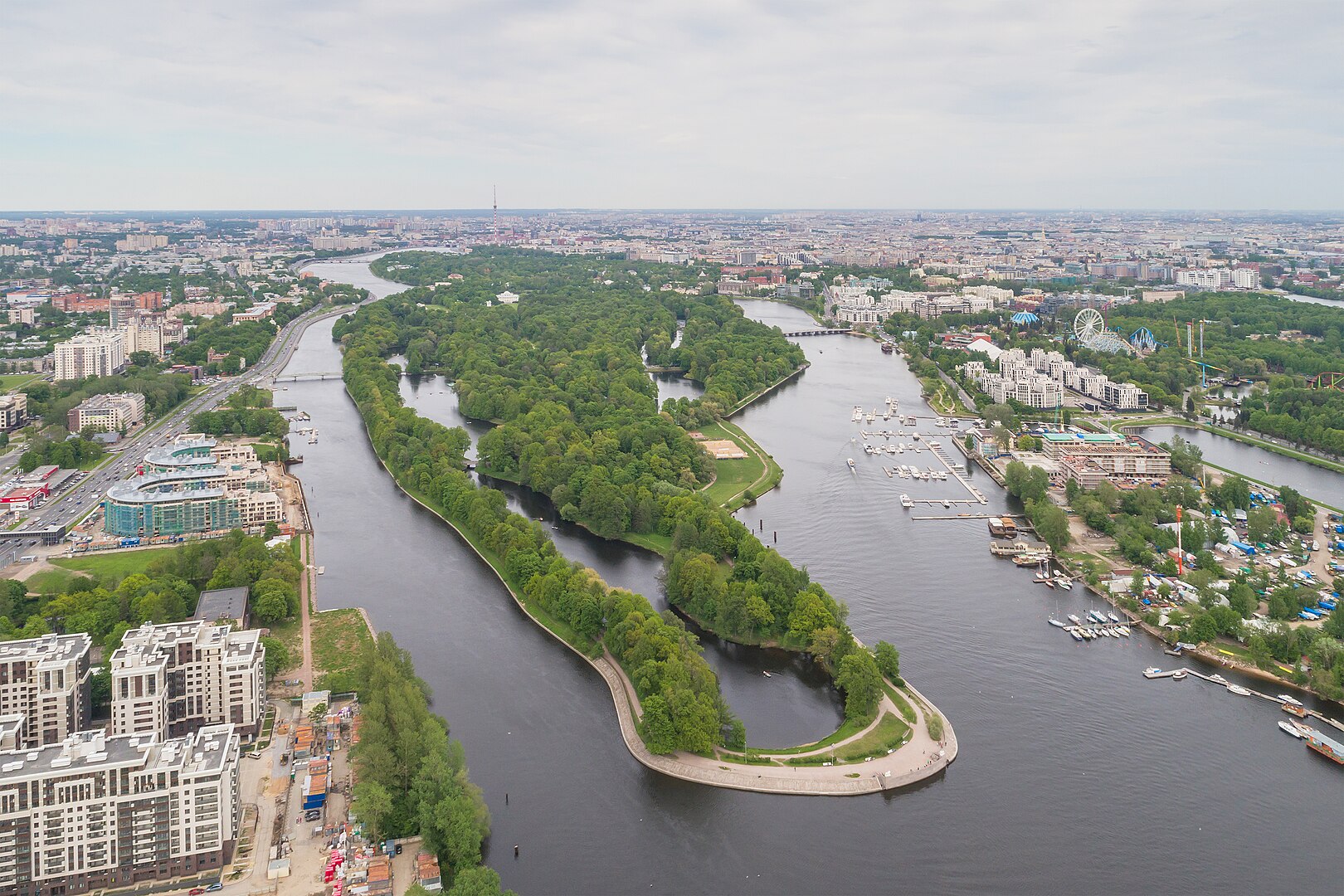
Yelagin Island is located on the Neva River in St. Petersburg and serves as a perfect getaway for those wishing to escape the city’s noise. It stands out for its natural beauty, vast green spaces, wooded areas, and tranquil atmosphere. The island offers numerous areas for walking, cycling, or simply enjoying nature. Although it is close to the city, Yelagin Island provides a peaceful environment, making it an ideal spot for those seeking a connection with nature.
The island’s historical structures are also quite impressive. In particular, Yelagin Palace is one of its most prominent landmarks. Built in the 19th century in neoclassical style, the palace is known for its elegant interiors and the surrounding park. Yelagin Palace was once used as a summer residence by the Russian aristocracy. Today, the palace houses a museum, making it a wonderful place for those who want to explore the luxurious lifestyle of the Russian Empire and the history of the era. With its natural beauty and historical landmarks, Yelagin Island stands out as one of St. Petersburg’s significant tourist and cultural destinations.
13. Dostoevsky Museum – A museum dedicated to Fyodor Dostoevsky, one of the great writers of Russian literature.
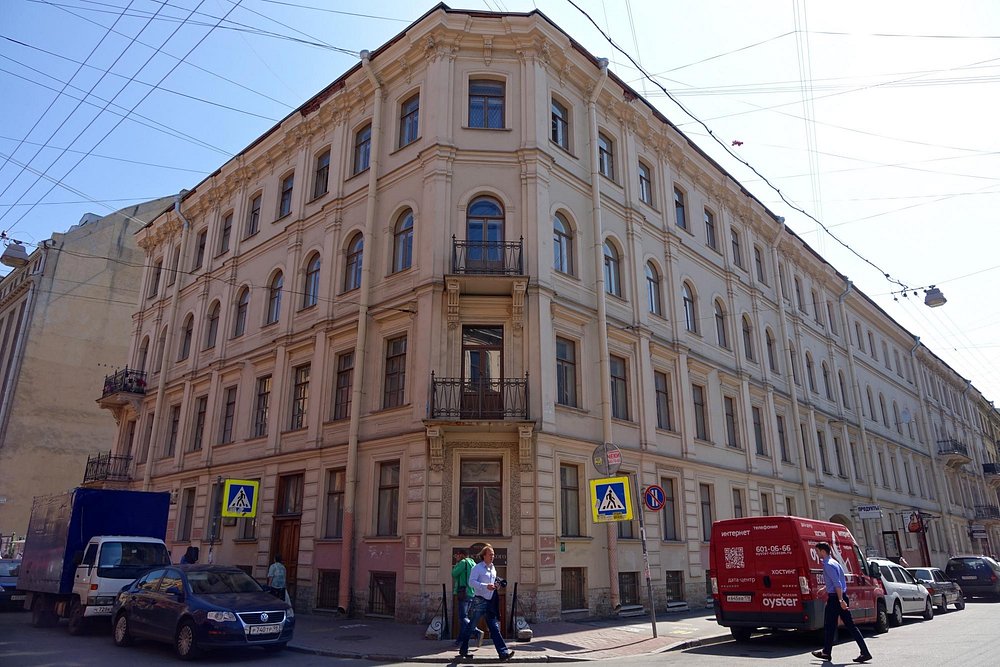
The Dostoevsky Museum is an important cultural site in St. Petersburg dedicated to one of the great figures of Russian literature, Fyodor Dostoevsky. The museum offers a comprehensive collection related to the author’s life and works and is located in the apartment where he lived from 1839 to 1849, a period that marked a significant part of his creative journey. The museum displays the writer’s personal belongings, handwritten manuscripts, first editions, and objects reflecting the social and cultural life of the era. This allows visitors to explore Dostoevsky’s life and literary legacy in greater depth.
The Dostoevsky Museum is not only focused on his works but also serves as a valuable source for understanding the spirit of 19th-century Russian society. The museum features documents, photographs, and artworks that reflect the turning points and personal struggles in Dostoevsky’s life. Touring the museum provides a glimpse into the world of his profound philosophical ideas, social critiques, and psychological insights. A must-visit for literature enthusiasts and history lovers, the Dostoevsky Museum offers a unique experience for those wishing to get closer to an essential part of Russian literary heritage.
14. Neva River – Boat tours and scenic views for exploring the city.

The Neva River is a vital waterway that runs through the heart of St. Petersburg, giving life to the city. The city was built around the Neva, and the river essentially divides it in two, connecting its historical landmarks. The Neva River is famous for its elegant bridges, historic buildings, and enchanting views. Boat tours along the river offer visitors a unique way to explore the city from a different perspective. These tours provide the opportunity to see palaces, churches, bridges, and other historic structures lining both banks of the Neva, showcasing the city from a new angle.
River cruises are especially popular during the summer months. Boat tours on the Neva are a great way to explore the city while enjoying the peaceful scenery along the water. During these tours, visitors can admire the stunning views of historic buildings and elegant bridges that line the riverbanks. In addition, the bridge opening ceremonies on the Neva provide a unique experience that is special to the city. As one of the symbols of St. Petersburg, the Neva River offers a blend of natural beauty and historical texture for those exploring the city.
15. The Bronze Horseman – One of the most famous statues in the city, symbolizing Russia’s triumph.
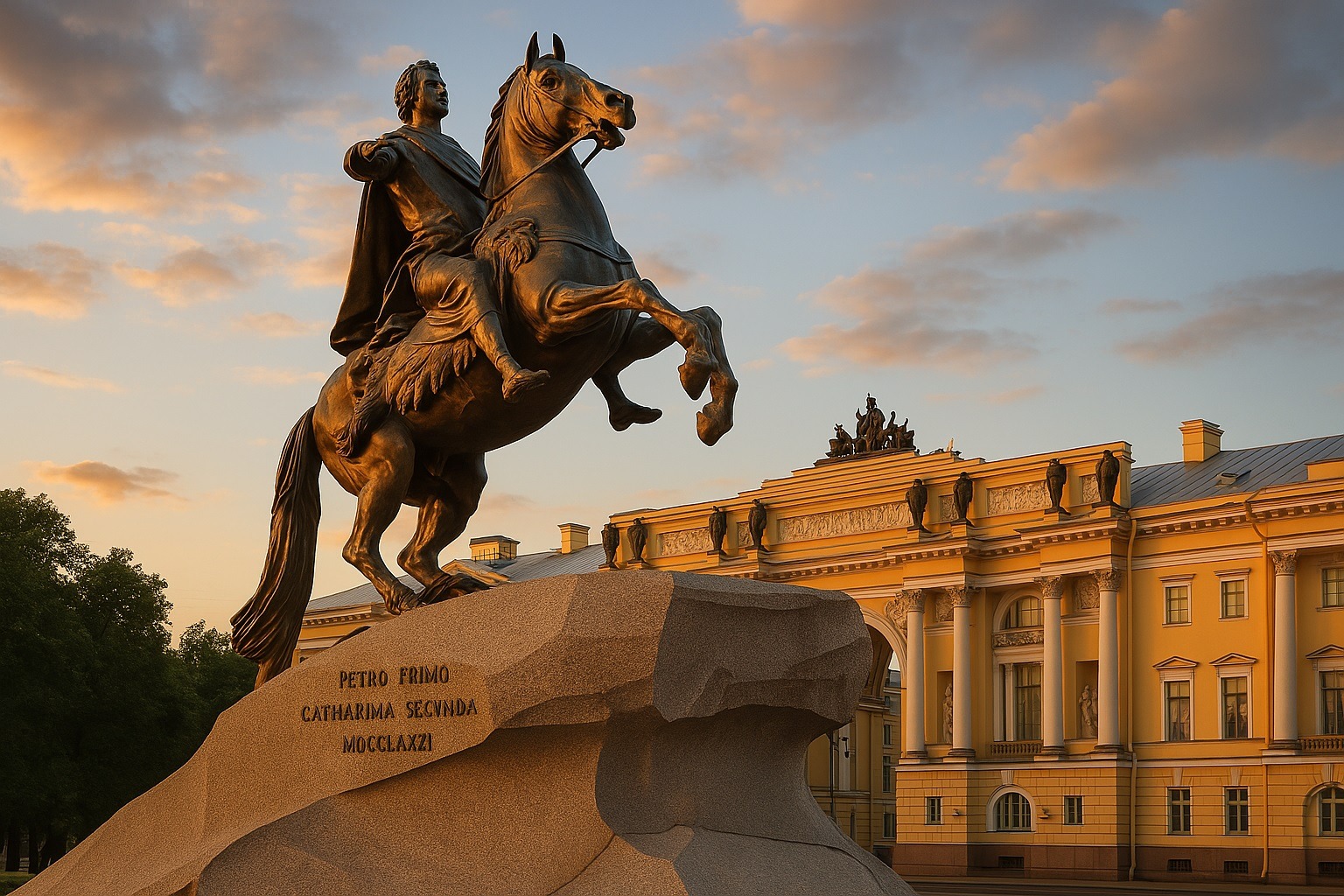
The Bronze Horseman is one of the most famous and recognizable statues in St. Petersburg. It is located in Senate Square, near the city center along the Neva River. Designed in 1782 by French sculptor Étienne Maurice Falconet, the statue was commissioned to symbolize the triumph of Tsar Peter the Great. This monument glorifies the greatness and victory of Russia, depicting Tsar Peter on horseback, positioned atop a massive stone with inscriptions that emphasize the power and triumph of the Russian Empire.
The Bronze Horseman is a masterpiece that represents the peak of the artistic and technical skills of its time and stands as one of St. Petersburg’s most iconic symbols. Its name comes from the bronze sculpture of the Russian emperor on horseback. The statue also symbolizes Peter the Great’s leadership in modernizing Russia and his military victories. Visitors often stop to take photos and admire the monument while exploring the city, bearing witness to one of the most significant moments in Russian history. As a symbol of the city’s historical legacy and Russia’s strength, the Bronze Horseman remains one of St. Petersburg’s most treasured monuments.
16. Yusupov Palace – A palace reflecting the splendor of the Russian aristocracy and known as the place where Rasputin was killed.

Yusupov Palace is one of the most elegant and impressive palaces in St. Petersburg and a historic structure that reflects the splendor and power of the Russian aristocracy. Built in the late 18th century, the palace belonged to the Yusupov family and showcases the wealth and luxury of its era. Designed with a blend of Baroque and Rococo styles, the palace features opulent interiors, refined furnishings, grand halls, and notable artworks. Today, the palace functions as a museum where visitors can view many objects that reflect the lifestyle and opulence of the Russian aristocracy.
Yusupov Palace is also famous for a historical event: it is known as the place where one of Russia’s most controversial figures, Grigori Rasputin, was assassinated. In 1916, members of the Yusupov family killed Rasputin in the palace. This event symbolizes the chaos and political intrigue of Russia’s final years before the revolution. The tragic incident took place in a room in the palace’s basement and has been documented in numerous books and films. Yusupov Palace attracts great interest not only for its magnificent interiors and historical significance but also as the site of this dramatic episode in Russian history.
17. Vasilievsky Island – An island home to important historical buildings and museums of the city.
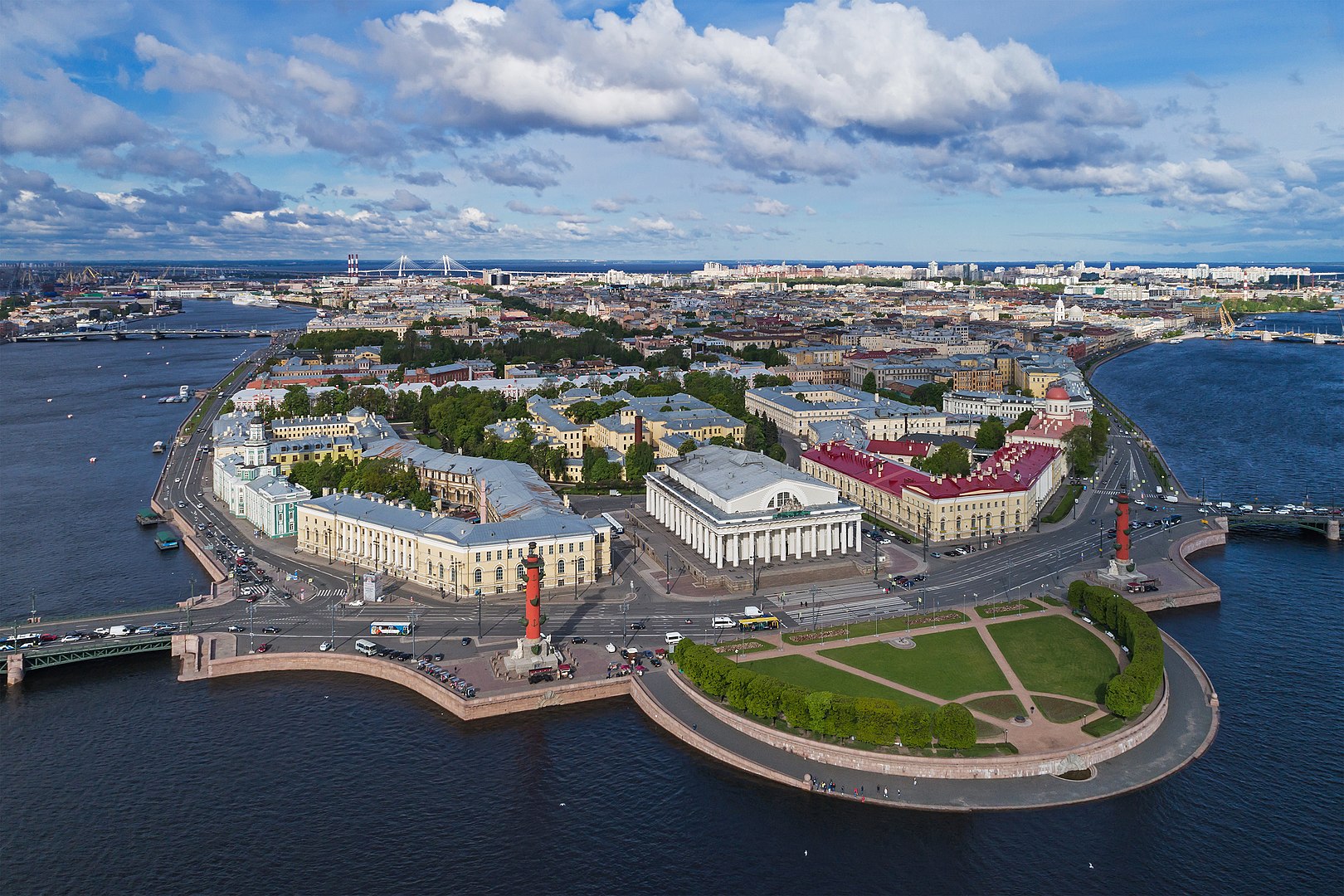
Vasilievsky Island is one of the most important areas of St. Petersburg, known for its historical buildings and museums. Located on the northern bank of the Neva River, this island is a must-visit destination for anyone exploring the city. Vasilievsky Island is surrounded by significant landmarks that symbolize the city’s historical and cultural development. The island features elegant architecture, impressive old buildings, classically constructed bridges, and refined squares. It also has a long history as a center of trade and culture in St. Petersburg.
The island is home to many museums, among which the most notable are the branch of the Russian State Museum and the Kunstkamera, Russia’s first museum of ethnography and anthropology. The Kunstkamera stands out with its rare collections in the fields of anthropology and ethnography, while other museums on the island display artworks and historical documents related to the city. With its historical character and cultural heritage, Vasilievsky Island is a key part of St. Petersburg. The old buildings and museums on the island offer visitors the chance to explore the city and Russia’s past in greater depth.
18. Smolny Cathedral – A baroque-style cathedral known for its striking blue and white façade.

Smolny Cathedral is one of the most striking structures in St. Petersburg, particularly known for its blue and white façade. Built in the 18th century in the baroque style, this cathedral is an impressive site for visitors, both architecturally and historically. Designed by Italian architect Bartolomeo Rastrelli, construction of the cathedral began in 1748. Its stunning exterior, adorned with golden details, white walls, and blue domes, enhances the elegant and majestic appearance of the cathedral.
Although it was originally built for the Russian Orthodox Church, its completion took many years, and the interior was later used for different purposes. Today, while religious ceremonies can still be held inside, the cathedral primarily serves as a museum and cultural center. The immense size and refined baroque interiors of Smolny Cathedral captivate all who visit. Additionally, the surrounding Smolny Convent holds great historical importance. Smolny Cathedral reflects the cultural richness of St. Petersburg and offers an unforgettable experience for those visiting the city.
19. Mariinsky Theatre – A world-renowned theater where opera and ballet performances are staged.
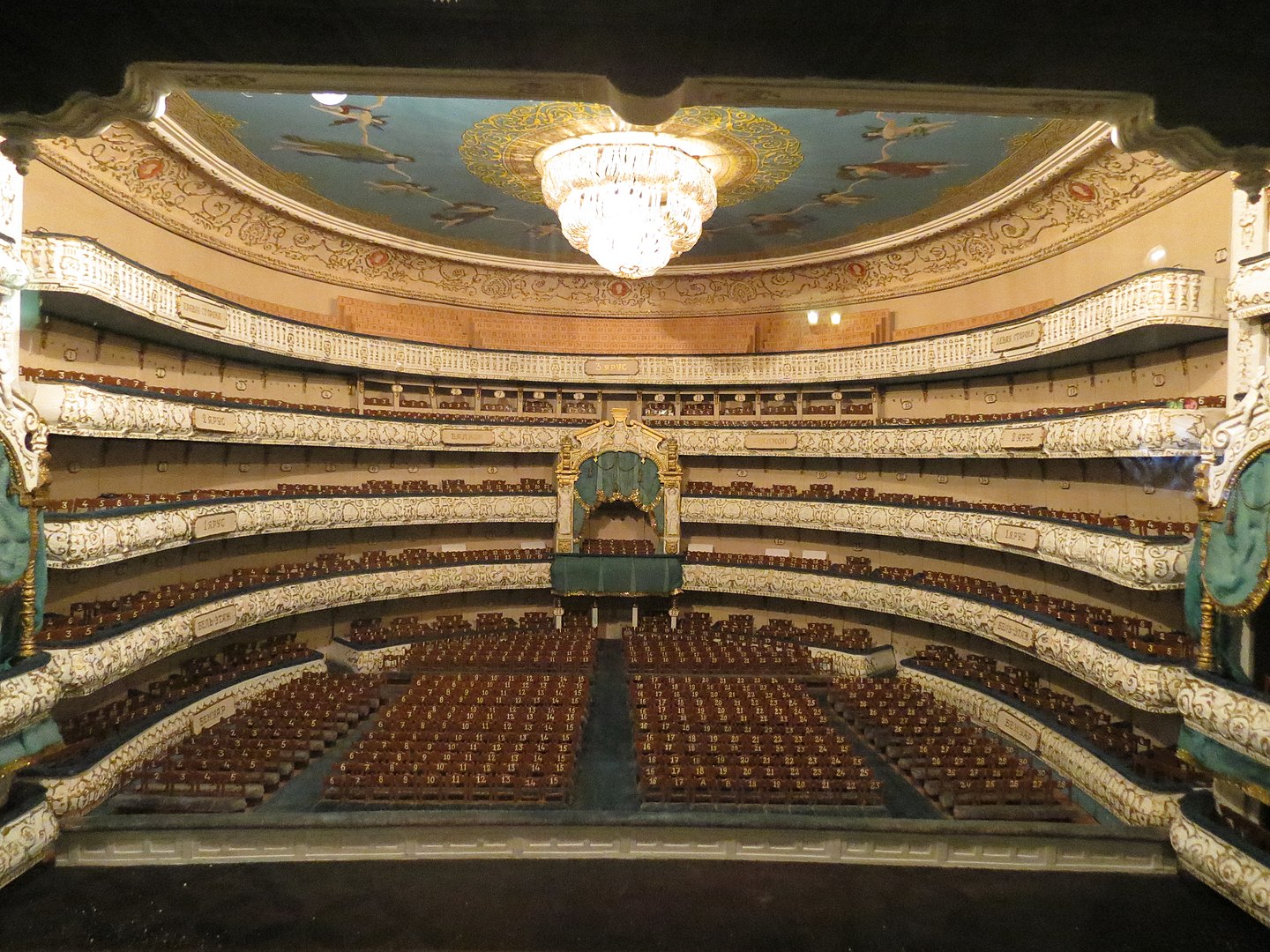
The Mariinsky Theatre is one of the central venues of St. Petersburg’s cultural life and hosts world-renowned opera and ballet performances. Founded in 1860, this magnificent theatre is considered one of Russia’s most prestigious performing arts centers. It provides an important stage for both local and international artists and has played a significant role in the development of Russian opera and ballet. During the Imperial era, the Mariinsky Theatre became a symbol of the Russian Empire’s artistic richness.
Today, the Mariinsky Theatre remains a preferred venue for leading opera and ballet companies from around the world. Its grand interiors, luxurious seating, and opulent decorations offer audiences not only music and dance but also a historic atmosphere. Each year, numerous major performances are staged here, including famous Russian ballets and operas. In addition to being a gathering point for art lovers, the theatre is one of the most treasured elements of St. Petersburg’s cultural heritage. For both art enthusiasts and tourists, the Mariinsky Theatre is an essential place to visit.
20. Kronstadt Island – An island outside St. Petersburg, known for its historic military structures and maritime museums.

Kronstadt Island is a historic island located just outside St. Petersburg in the Baltic Sea. Closely linked to Russia’s naval history, the island is especially known for its military structures and maritime museums. Founded in the 18th century by Tsar Peter the Great, Kronstadt became an important military center as one of the naval bases of the Russian Empire. The island features historic forts, walls, and naval structures built during that time, which today are of great significance in terms of both history and military engineering.
Kronstadt Island is also home to several maritime museums. These museums exhibit rich collections related to the history of Russian seafaring, including ship models and naval equipment. One of the island’s most famous landmarks is the Kronstadt Naval Cathedral, a significant site with great influence on the history of the city and region. In addition to its historical architecture, the island attracts attention with its natural setting closely connected to the sea. Kronstadt stands out as a cultural and historical destination perfect for a day trip, offering a pleasant escape for both residents of St. Petersburg and tourists.
21. Alexeyevsky Garden – A green retreat near the city center.

Alexeyevsky Garden is a peaceful, green retreat located near the city center of St. Petersburg. This park offers a tranquil resting area for both locals and tourists. It is an ideal spot for those looking to escape the busy pace of city life. The garden features walking paths, ponds, flowers, and open areas filled with trees, providing visitors with the opportunity to connect with nature. It is also a great place to observe local birds and other wildlife native to the region.
Alexeyevsky Garden is situated in a historic area and contains several old monuments and statues. Its serene atmosphere makes it perfect for reading, picnicking, or simply enjoying the natural surroundings. This green space offers visitors a chance to relax and unwind while exploring the rich cultural fabric of St. Petersburg. For those wanting to enjoy nature while discovering the city, Alexeyevsky Garden is an ideal destination.
22. Russian State Museum – A museum that houses important collections of Russian art.
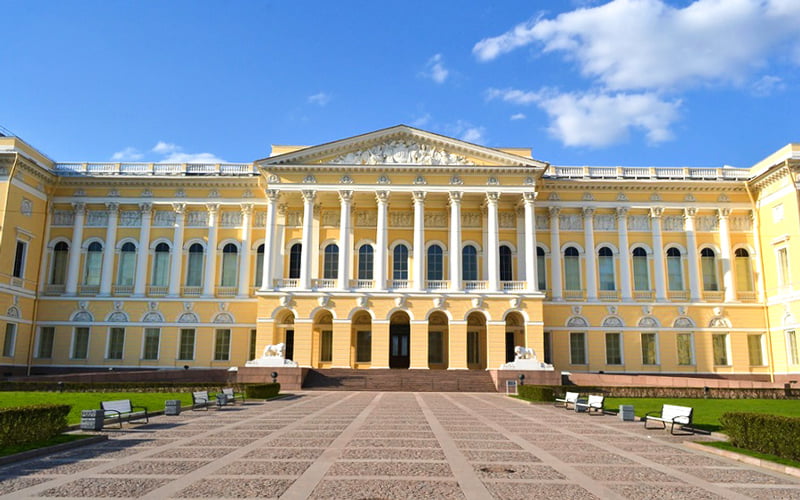
The Russian State Museum is one of the most important cultural and artistic institutions in St. Petersburg. Established in 1895, this museum holds a significant collection that explores the depths of Russian culture and showcases a wide range of Russian art. The museum features thousands of works spanning from the Middle Ages to the present day. It is especially renowned for its rich collections of Russian painting, sculpture, graphic arts, folk art, and manuscripts.
While the museum houses numerous works reflecting Russia’s cultural history, it also features masterpieces by famous Russian artists such as Ilya Repin, Aivazovsky, Levitan, and Kandinsky. Additionally, the collections include traditional costumes, handcrafted items, and other cultural artifacts representing Russian folk art. The Russian State Museum offers visitors the chance to witness the evolution of Russian art, allowing them to explore the country’s history and culture through an artistic lens. For both art enthusiasts and history lovers, this museum is a must-visit destination when in the city.
23. Moscow Railway Station – One of the city’s historic buildings, known for its architecture and grandeur.
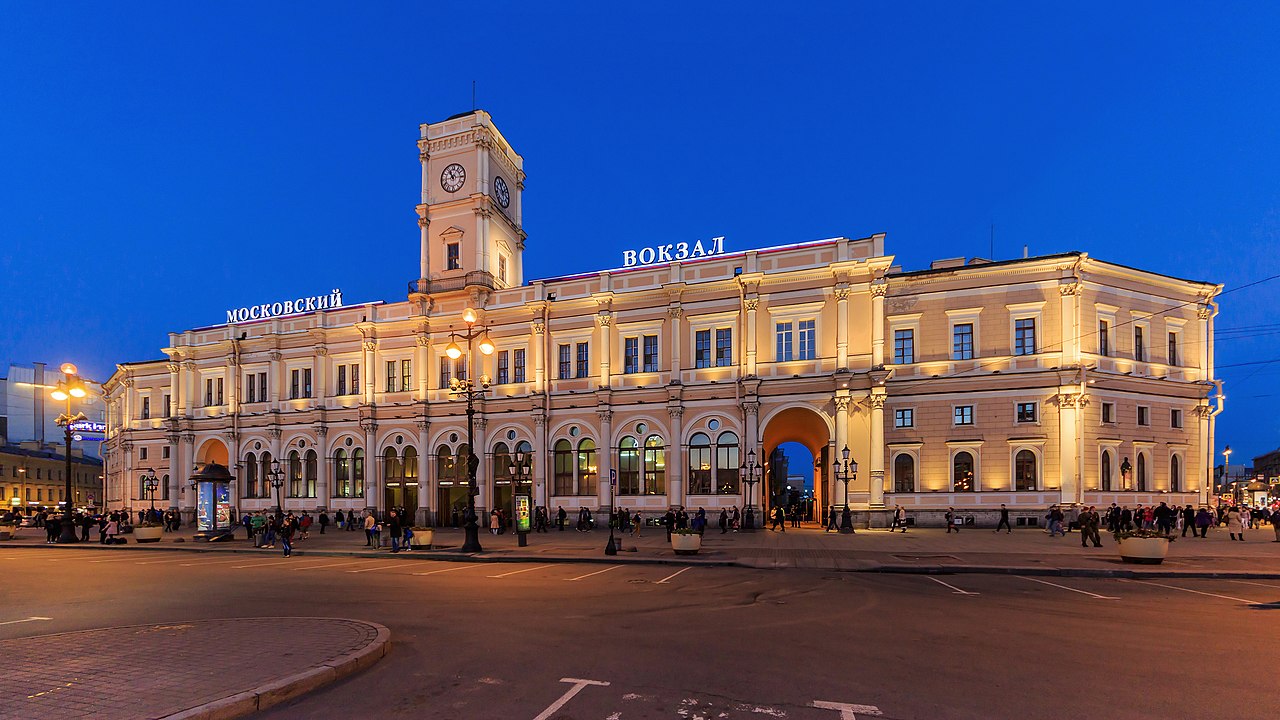
Moscow Railway Station is one of the historical landmarks of St. Petersburg and stands out as an important symbol of the city with its architecture and grandeur. Built in 1851, this station serves as one of the main transportation hubs connecting the city to Moscow and was considered one of the largest infrastructure projects of its time. The station was constructed in a blend of neoclassical and baroque styles, and its majestic exterior—featuring elegant columns, large arches, and high ceilings—offers an impressive visual presence.
Beyond being a transit point, the Moscow Railway Station is a significant structure that forms visitors’ first impressions upon arrival in the city. The interior includes spacious waiting halls, intricate decorations, and refined detailing. A massive blue dome inside the station further enhances the building’s visual appeal. Reflecting the historical character of St. Petersburg, this station serves as a graceful gateway to the city, welcoming travelers with elegance. Architecturally and historically important, Moscow Railway Station is among the most remarkable structures in St. Petersburg.
24. Semyonovsky Bridge – A bridge over the Neva River offering beautiful views.
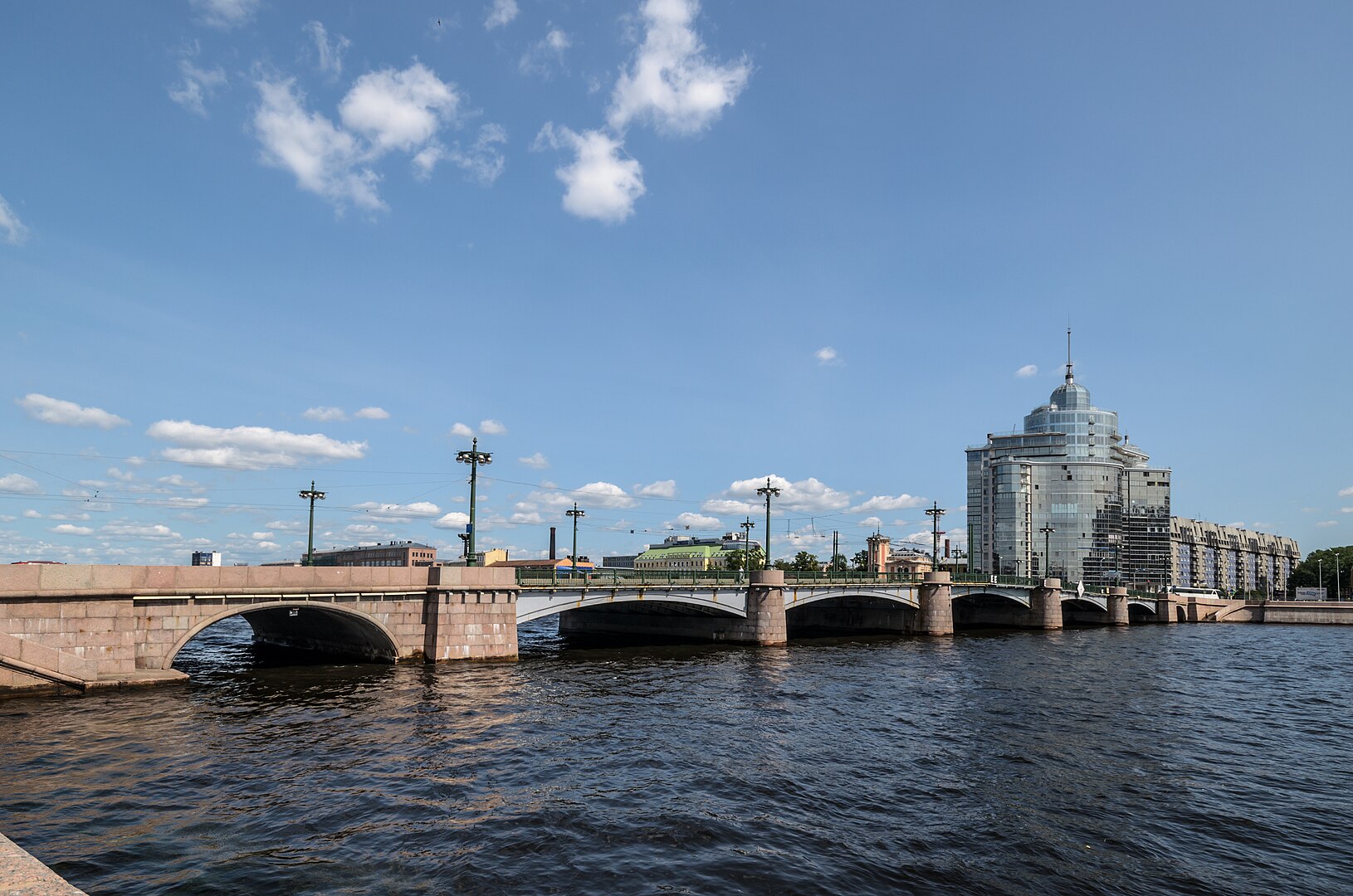
Semyonovsky Bridge is one of the most beautiful bridges in St. Petersburg, located over the Neva River and offering stunning views of the city. Built in 1789, this bridge is an important transportation link and stands out with its architecture. While connecting the two banks of the Neva, it also provides visitors with elegant views of St. Petersburg. Those crossing the bridge enjoy a unique experience as they observe the city’s surrounding historical buildings, the grandeur of other bridges, and the calm waters of the Neva River.
Semyonovsky Bridge offers more than just a passage—it is a wonderful spot for those who wish to explore the beauty of St. Petersburg. Visitors walking across the bridge have the opportunity to view the city from a different perspective. The riverside parks and historical buildings on both sides create a magnificent atmosphere. Semyonovsky Bridge is an ideal location for both sightseeing and photography. As a structure of both historical and visual significance, this bridge adds to the iconic views that define the character of St. Petersburg.
25. Zelenogorsk – A seaside resort outside the city, known for its natural beauty and coastline.
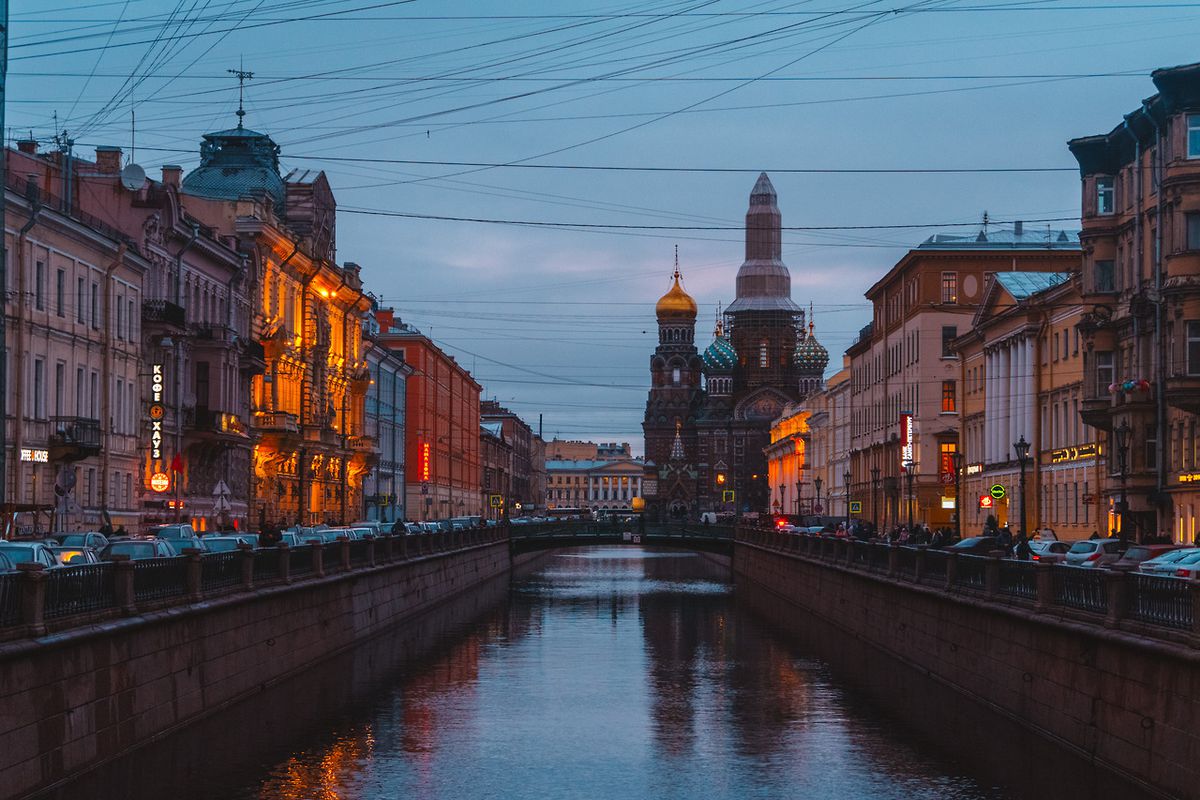
Zelenogorsk is a popular seaside resort located outside of St. Petersburg, on the northern shore of the Neva River. This area is known for its natural beauty and peaceful atmosphere, offering visitors a refreshing escape into nature. Zelenogorsk is famous for its lush forests, clean air, and beautiful beaches. It provides an ideal setting for hiking, cycling, or simply enjoying the outdoors. The seaside area of Zelenogorsk is also popular for activities such as swimming, sunbathing, and water sports.
In addition to being a favorite summer getaway for residents of St. Petersburg, Zelenogorsk also offers historical and cultural richness. The area’s parks, historic buildings, and restaurants serving traditional Russian cuisine provide visitors with a memorable experience. Zelenogorsk is a perfect retreat for nature lovers and those seeking a peaceful vacation. With its natural beauty and seaside charm, it offers a wonderful alternative for those wishing to escape the fast pace of life in St. Petersburg.
26. Alexander Nevsky Monastery – A large monastery complex dating back to the 18th century.

Alexander Nevsky Monastery is one of the oldest and most significant religious structures in St. Petersburg. Founded in 1710 by Tsar Peter the Great, this large monastery complex was built in honor of Saint Alexander Nevsky, the city’s protector. Construction of the monastery began in the early 18th century under the Russian Orthodox Church, and it was completed in a striking Russian Baroque architectural style. More than just a religious structure, the complex has become an important symbol of Russian history and culture.
The monastery is located quite close to the historical center of St. Petersburg and offers a peaceful retreat into the past for those who enter. Within the complex, the Nevsky Cathedral stands out with its impressive golden dome and elegant interior. In addition, the courtyard contains the graves of many notable members of the Russian aristocracy, making it a place of reflection and remembrance. Alexander Nevsky Monastery serves not only as a site for religious ceremonies but also provides visitors with a deeply historical and cultural experience. For those interested in history and religion, this monastery is a must-see destination in St. Petersburg.
27. Victory Park – One of the city’s largest parks, offering a peaceful atmosphere.

Victory Park is one of the largest and most peaceful parks in St. Petersburg. With its location near the city center, it offers a perfect relaxation area for both locals and tourists. This expansive park creates a calm atmosphere with its green spaces, ponds, walking paths, and trees. Visitors can enjoy walks, have picnics, or simply relax and take in the beauty of nature. Victory Park is an ideal escape for those looking to unwind and get away from the city’s noise.
Within the park, there are various sculptures, monuments, and elements of natural landscaping, making it not only a recreational space but also a cultural and artistic site to explore. Especially during the summer months, the park’s wide open spaces are used for outdoor events and concerts. Victory Park is a perfect spot for those who want to enjoy nature while exploring the city. With its peaceful atmosphere and vast greenery, it stands as one of St. Petersburg’s most treasured outdoor areas.

The Russian Empire Archives is an institution of great importance to the history of St. Petersburg. This archive houses a vast collection of documents, correspondences, maps, and historical records from the era of the Russian Empire, shedding light on the past of both the city and the country. It serves as a unique resource for researchers interested in exploring Russia’s political, military, and cultural history in depth. The documents held within the archives offer valuable insights into the administrative structure, imperial governance, diplomatic relations, and social systems of the time.
The Russian Empire Archives preserves St. Petersburg’s historical heritage and offers visitors a deeper understanding of its past. Here, documents from the 18th and 19th centuries are displayed, particularly those related to the policies of Russian emperors and the societal structure of the period. This archive provides an educational experience not only for historians and researchers but also for visitors of all ages who are interested in Russian history. As an important site in St. Petersburg, it is a must-visit destination for those wishing to explore the city’s cultural richness and historical significance.
29. Kazan River – A river located in the inner parts of St. Petersburg, which can be explored via boat tours.
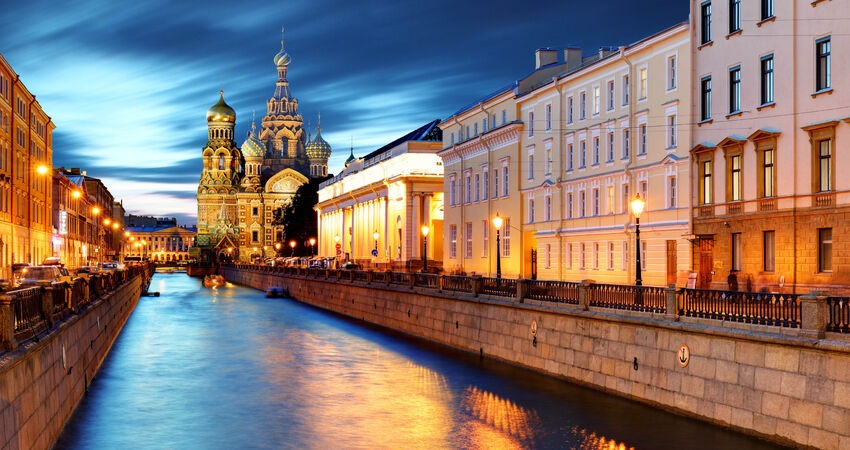
The Kazan River is a waterway located in the inner parts of St. Petersburg and offers an ideal route for exploring the city. Situated near the historical center, the river provides a perfect opportunity for those who want to discover the city from a different perspective. Boat tours along the Kazan River allow visitors to admire the city’s historic buildings, elegant bridges, and riverside green spaces. These tours offer a more peaceful way to explore St. Petersburg, away from the busier Neva River.
Named after the Kazan Cathedral, the Kazan River is one of the city’s most significant waterways, showcasing the cultural fabric of St. Petersburg. During the boat tours, passengers pass by historic riverside buildings, bridges, and city landmarks. The calm waters offer unique views and give visitors a fresh angle to appreciate the city’s charm. The Kazan River is a pleasant and tranquil option for boat tours in St. Petersburg.
30. Pavlovsk Palace and Park – A site known for its peaceful nature and historic palace.
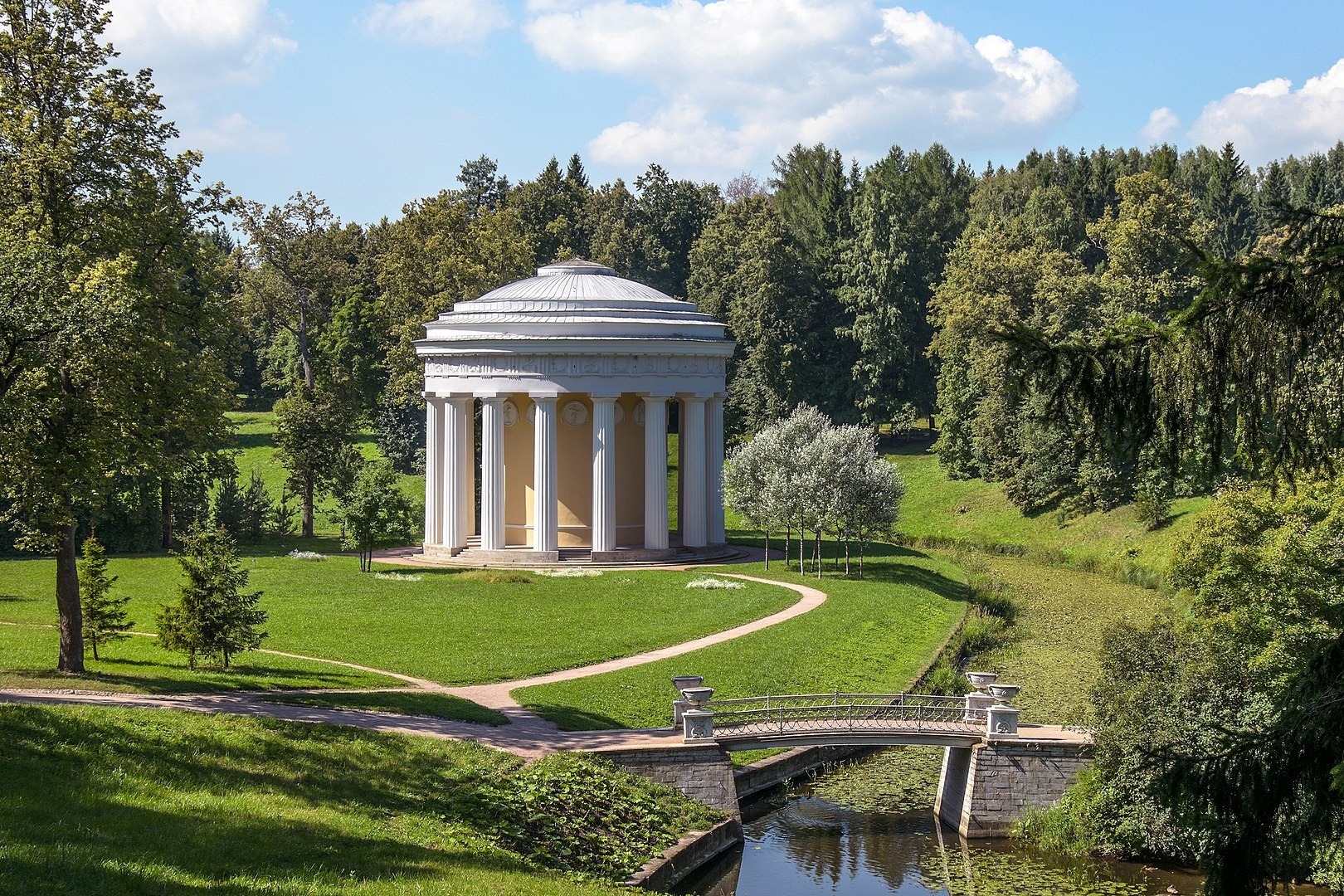
Pavlovsk Palace and Park is located outside of St. Petersburg and stands out for both its natural beauty and historical significance. Built in the 18th century for Russian Emperor Paul I, the palace is an elegant structure that blends baroque and neoclassical styles. Pavlovsk Palace enchants visitors with its historical atmosphere, and its interiors feature numerous artworks reflecting the luxurious lifestyle and artistic detail of the era. The rooms of the palace offer a glimpse into the life of the Russian aristocracy.
The park surrounding Pavlovsk Palace is a perfect retreat for those seeking to escape the city’s noise and enjoy nature. With wide walking paths, ponds, monuments, and lush greenery, the park provides a tranquil setting despite being close to the city. It also draws attention with its landscaping that reflects the Russian gardening tradition. Pavlovsk Palace and Park is a wonderful destination for both nature lovers and history enthusiasts, and it is one of the most popular tourist areas around St. Petersburg.
St. Petersburg is like an open-air museum, with its historical texture, artistic richness, and cultural heritage. Every corner of the city offers visitors a different historical and aesthetic experience. From the magnificent collections of the Hermitage Museum to the elegant architecture of Kazan Cathedral, each site provides a deep exploration of Russia’s past and culture. Boat tours along the Neva River offer an unforgettable experience for those wishing to view the city from another angle, while the winter palaces and parks provide peaceful escapes for explorers.
The city stands out not only for its historical buildings but also for its vibrant cultural life and modern atmosphere. St. Petersburg is beautiful in every season; snow-covered streets in winter and lively riverside festivals in summer make the city attractive year-round. This unique city offers a perfect destination for those who want a holiday intertwined with history and culture. St. Petersburg is a captivating city that, once discovered, will remain forever in one’s heart.
